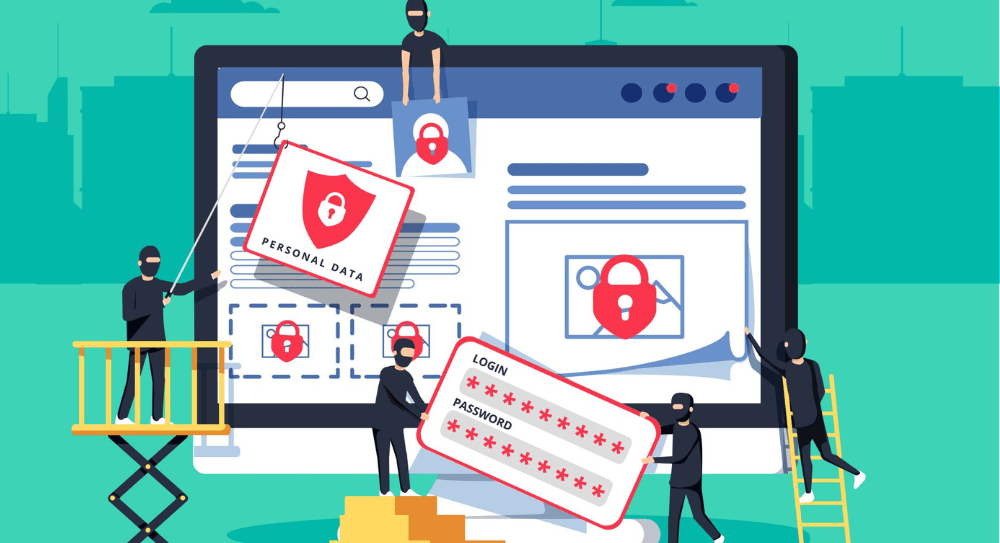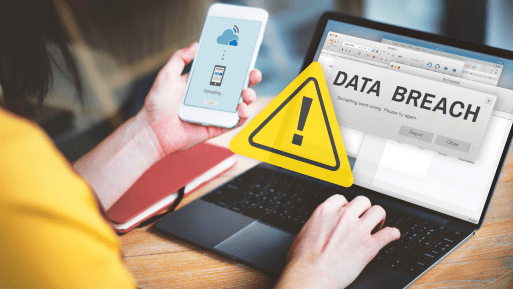A data breach could ruin your business overnight. Imagine customer outrage as hackers leak the private details your company promised to protect.
Are you prepared to deal with regulatory fines, lawsuits, costly investigations, disrupted operations, and destroyed trust while cybercriminals profit freely from stolen data? That’s the harsh aftermath companies face today following high-profile breaches.
You need to comprehend modern data breach realities—what they entail, why they occur, how to identify threats early, and how to prevent them. This guide makes sensitive cybersecurity concepts approachable to enable smarter decisions in securing your systems against catastrophe.
What Is A Data Breach?
A data breach occurs when cybercriminals infiltrate your systems and access sensitive information without authorization. Breaches involve stealing or leaking confidential data like customer records, passwords, financial documents, emails, or intellectual property that companies entrust to online environments.
Skilled hackers use sophisticated tools to exploit the slightest weakness in defenses. They take advantage of vulnerable software, stolen credentials, tricked employees, business partner access, unencrypted transfers, and even insider threats to penetrate networks.
You might be able to prevent data breaches by hiring cybersecurity services to harden systems continuously. Understanding breach avenues helps strengthen protections proactively.
In this era of increased remote work, personal property insurance with business equipment coverage and cyber security is more important than ever. Such plans are essential for people working from home since they protect personal assets, professional obligations, and cyber dangers. Insurance protections are included in this way, protecting against data breaches’ financial and operational effects, making it an important part of a strong cyber defense plan.
Why Do Breaches Occur?
Most data breaches boil down to security failures and human error. Outdated systems containing vulnerabilities get targeted by hackers exploiting weaknesses to infiltrate networks and steal data.
Accidental data leaks by insiders mishandling information also trigger breaches frequently. The root causes include:
- Poor system security and unpatched flaws
- Weak passwords, multifactor authentication failures
- Phishing scams and social engineering
- Unencrypted data transfers/storage
- Lost or stolen devices/paper records
- Unauthorized insider access
- Improper data disposal/handling
Making proactive investments to harden environments and detect threats early significantly raises the difficulty for criminals.
What Gets Breached?
Virtually every industry faces data breach risks today as sensitive information gets digitized and networked across cloud platforms. But some data types see higher breach rates than others. These commonly breached records include:
-
Personal Information
Names, addresses, phone numbers, Social Security numbers, driver’s license details, passport numbers, patient healthcare records, insurance policy information, financial statements, etc.
-
User Account Details
Usernames, passwords, security questions, login timestamps, failed login attempt logs, password reset tokens, multifactor authentication details, and session IDs.
-
Payment Information
This encompasses full credit/debit card numbers, card verification codes, expiration dates, billing addresses, bank/routing account details, wire transfer logs, and other payment information.
-
Business Intelligence
Email inboxes, including attachments/metadata, contracts, strategic plans, product designs/code, proprietary research, trade secrets, intellectual property like patents, and confidential memos/documents.
How Breaches Impact You
Suffering a breach carries severe consequences beyond just data loss. You may face legal/regulatory penalties for violating disclosure laws.
Forensics and recovery costs pile up fast while operations get disrupted for weeks investigating the breach. Worse yet, there is irreparable reputation damage and loss of customer trust that destroys brands after high-profile incidents.
For customers exposed to breaches, identity theft risks skyrocket, leading to bank/credit card fraud plus medical/tax/employment fraud. And painful account recovery procedures await all users who must reset passwords across potentially dozens of breached websites.

Best Practices For Prevention
Ultimately, consistent vigilance and proactive security safeguards offer the best breach protections. But amid competing priorities, businesses often neglect cybersecurity until after suffering an attack. Don’t wait to implement best practices that mitigate risks substantially:
-
Keep All Systems Updated
Run the latest software versions across networks/servers and endpoint devices while establishing processes for rapid updates whenever new patches are released. Much exploitation targets known vulnerabilities with available fixes.
-
Minimize Access
Only authorize essential system/data access for users per role responsibilities. Never use default passwords, ensure standard user accounts on all machines, set user permission levels appropriately, promptly deactivate ex-employee accounts, and implement multifactor authentication universally.
-
Secure Passwords
Enforce complex password requirements, password manager usage, frequent rotation policies, and supporting infrastructure across all accounts with access to sensitive data.
-
Encrypt Data Flows
Implement encryption for data in transit over networks and at rest within databases/servers to ensure meaningless ciphertext even if intercepted.
-
Backup Continuously
Configure regular automated backups across servers, endpoints, databases, file shares, and email servers while retaining multiple generations of backups stored offsite in geographically distributed locations. Test restoration periodically.
-
Vet Third Parties
Review details like security practices, past breaches, employee screening, and compliance levels before partnering with outside vendors who may get access to internal systems/data. Conduct audits periodically post-partnership.
-
Train Employees
Build a workplace cybersecurity culture through new hire orientation plus continuous education covering threat awareness, safe internet usage, password policies, phishing identification, social engineering tactics, data handling procedures, and obligations to report risks proactively.
-
Harden Networks
Segment networks, close unused ports, deploy edge firewalls and intrusion detection systems, monitor traffic flows, and consider managed detection/response services to monitor networks actively, detect threats early, and terminate attacks.
Final Thoughts
Data breaches constantly threaten business operations and growth aspirations today. However, informed leaders make smart choices to secure systems appropriately for their unique risk profile, not under—protecting users through ignorance or overpaying without guidance.
Partner with cybersecurity experts and put proven best practices into action this quarter. Your company’s trustworthiness and future competitiveness depend on getting data security right—now’s the time to start.

